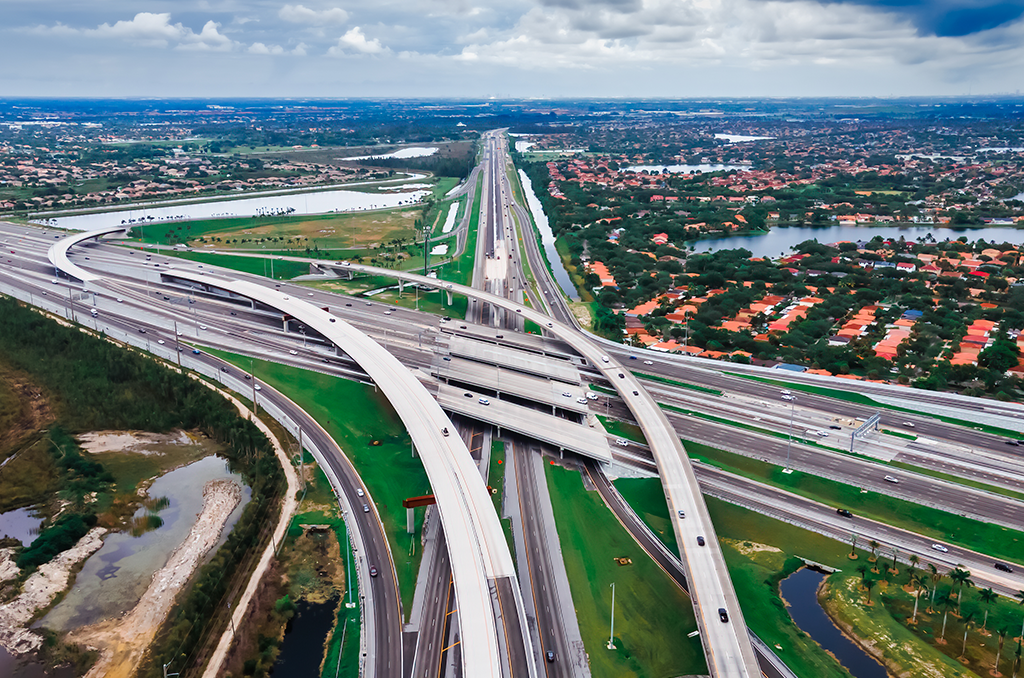Infrastructure – Florida Turnpike North Bond – Courtesy: Shutterstock — YES Market Media
The American Society of Civil Engineers gave Florida’s critical overall infrastructure a grade of C in its report for the state released Sunday. High marks were given for the condition of its ports and bridges, but the report card also warns of risks from aging dams and levees.
As Florida’s population continues to increase exponentially, keeping our schools, roads, and bridges up to date is crucial, according to the ASCE.
The ASCE’s report card covers 14 types of infrastructure, grading all aspects from roads to aviation and bridges to ports, schools, and transit.
While Florida’s overall grade was a C, the engineers did find that the state’s bridges and ports seem to be in good shape (B). The authors noted that recycling in the state is much higher than the national average. The state’s energy grid earned a C-minus, but ASCE commended FPL, TECO, and other utility companies for their efforts in moving utility lines underground.
Levees, critical because of Florida’s history of rising waters and hurricanes attributed to climate change, also received a D. Dams earned the lowest grade, D-minus. The warnings come as these dams and levees are more than 50 years old.
“Florida has nearly 1,000 dams, 98 of which are high-hazard potential, meaning if the dam failed, loss of life or significant economic damage would occur,” said Tzufit Boyle, president of ASCE’s Florida chapter.
The Sunshine State’s solid waste system earned the highest grade, a B+.
“The good news is that investment to stem the backlog of mediocre infrastructure conditions can help turn the tide for Florida’s economy and our workers,” engineers said in the report. “Several rising grades have resulted from focused investment in areas like coastal areas, energy and ports, or where FDOT, FDEP, and other local agencies are pushing smart investment solutions in roadways and stormwater systems.
“The grades range from B+ to D- and overall are higher than the National Report Card average,” the report said. “Florida’s population has grown at a rate of about 1% per year, adding about 300,000 people, which is the equivalent of adding a city the size of Orlando every year. Investing in infrastructure must be Florida’s top priority so we can continue to be the place people want to live and work.”
“Primarily, there are problems with funding our infrastructure,” said Kathleen Ruvarac with the American Society of Civil Engineers Florida Section. “Residents can use the report card particularly with their neighborhood associations, and their churches, and being involved with their children’s schools and use it as a tool with their local chamber of commerce and their businesses to advance the information.”
Stories that matter are our priority. At Florida Insider, we make sure that the information we provide our readers is accurate, easy-to-read, and informative. Whether you are interested in business, education, government, history, sports, real estate, nature or travel: we have something for everyone. Follow along for the best stories in the Sunshine State.

William is the Managing Editor at FloridaInsider.com. His years of experience in journalism, broadcasting and multimedia include roles as a Writer and Web Producer. He graduated from Florida International University with a Bachelor of Science and Communication.

